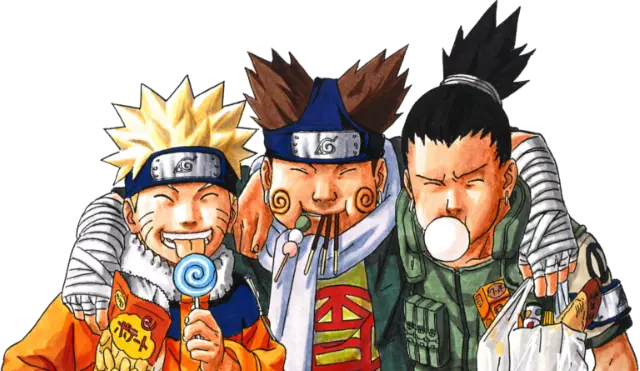
Manga & Related Works
06/09/2023
Sasuke's Story Artist Shingo Kimura Selects the Five Best-Drawn NARUTO Scenes! "When I'm Having Trouble With My Storyboards I Reread Chapter 1, and I'm Amazed Every Time." (Interview Part 3)
We asked Shingo Kimura, the artist for Naruto: Sasuke's Story–The Uchiha and the Heavenly Stardust (hereafter, Sasuke's Story), which was serialized on Shonen Jump+ and MANGA Plus, to select the five best scenes in NARUTO from the perspective of a manga artist. (Part 3 of 3)
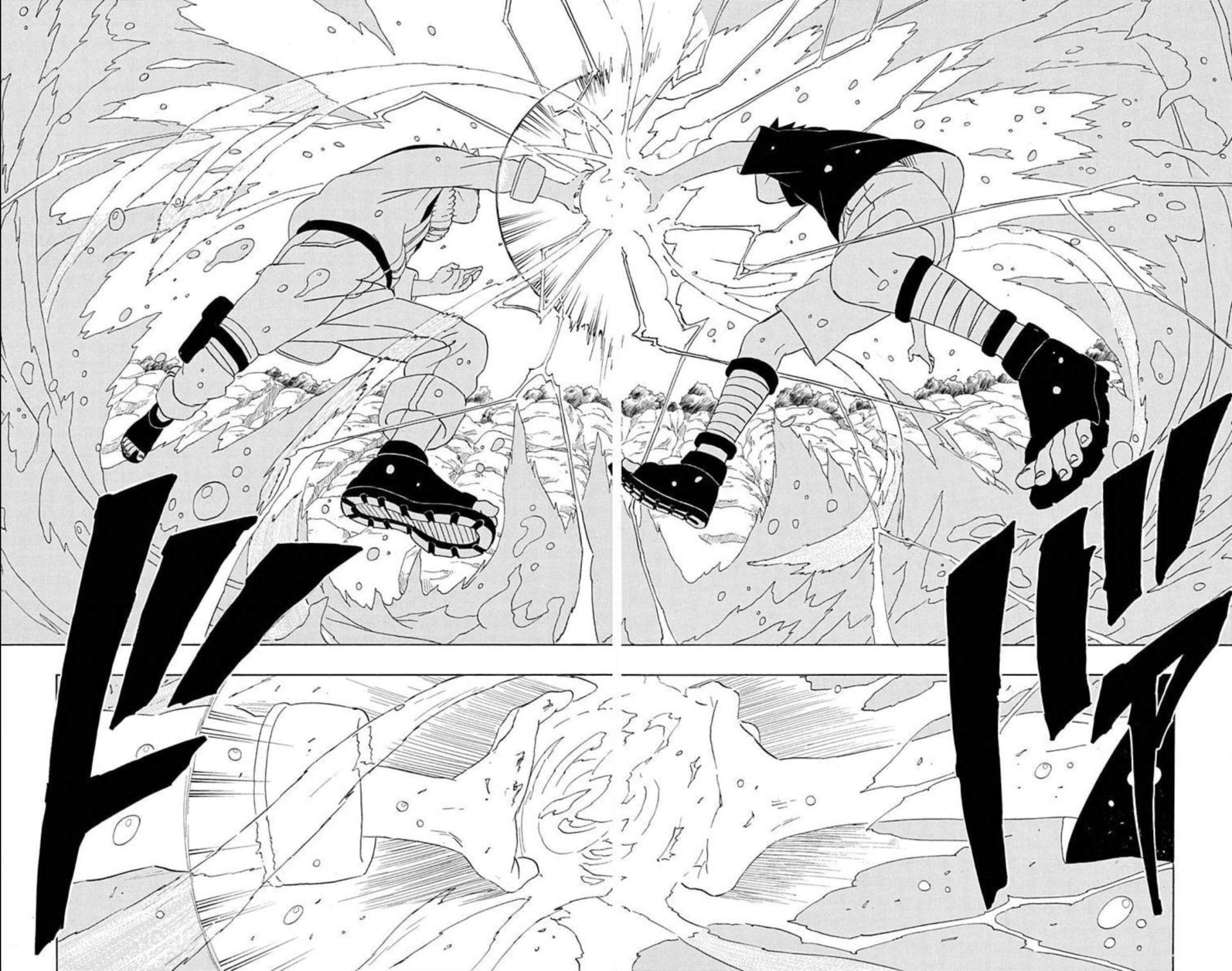
Naruto's Rasengan and Sasuke's Chidori
—Please tell us which NARUTO scenes you decided on as your personal favorites.
Well, I thought long and hard, and for the first one, I picked the scene in Volume 25 where Naruto's Rasengan and Sasuke's Chidori collide. Normally, for a scene like this, you'd draw the moment of impact, right?
But it's not quite like that here. You have the impact in a previous panel, and then the moments right after the collision are turned into this big, full-page spread.
Plus, the reader's perspective being from underwater is amazing. I don't think anyone else has had the idea to depict force of impact using bubbles. Although it darkens the image, a screentone was used to further emphasize the impact, but then the foaming water clears and the two characters become starkly visible. The whole sequence is incredible.
Well, I thought long and hard, and for the first one, I picked the scene in Volume 25 where Naruto's Rasengan and Sasuke's Chidori collide. Normally, for a scene like this, you'd draw the moment of impact, right?
But it's not quite like that here. You have the impact in a previous panel, and then the moments right after the collision are turned into this big, full-page spread.
Plus, the reader's perspective being from underwater is amazing. I don't think anyone else has had the idea to depict force of impact using bubbles. Although it darkens the image, a screentone was used to further emphasize the impact, but then the foaming water clears and the two characters become starkly visible. The whole sequence is incredible.
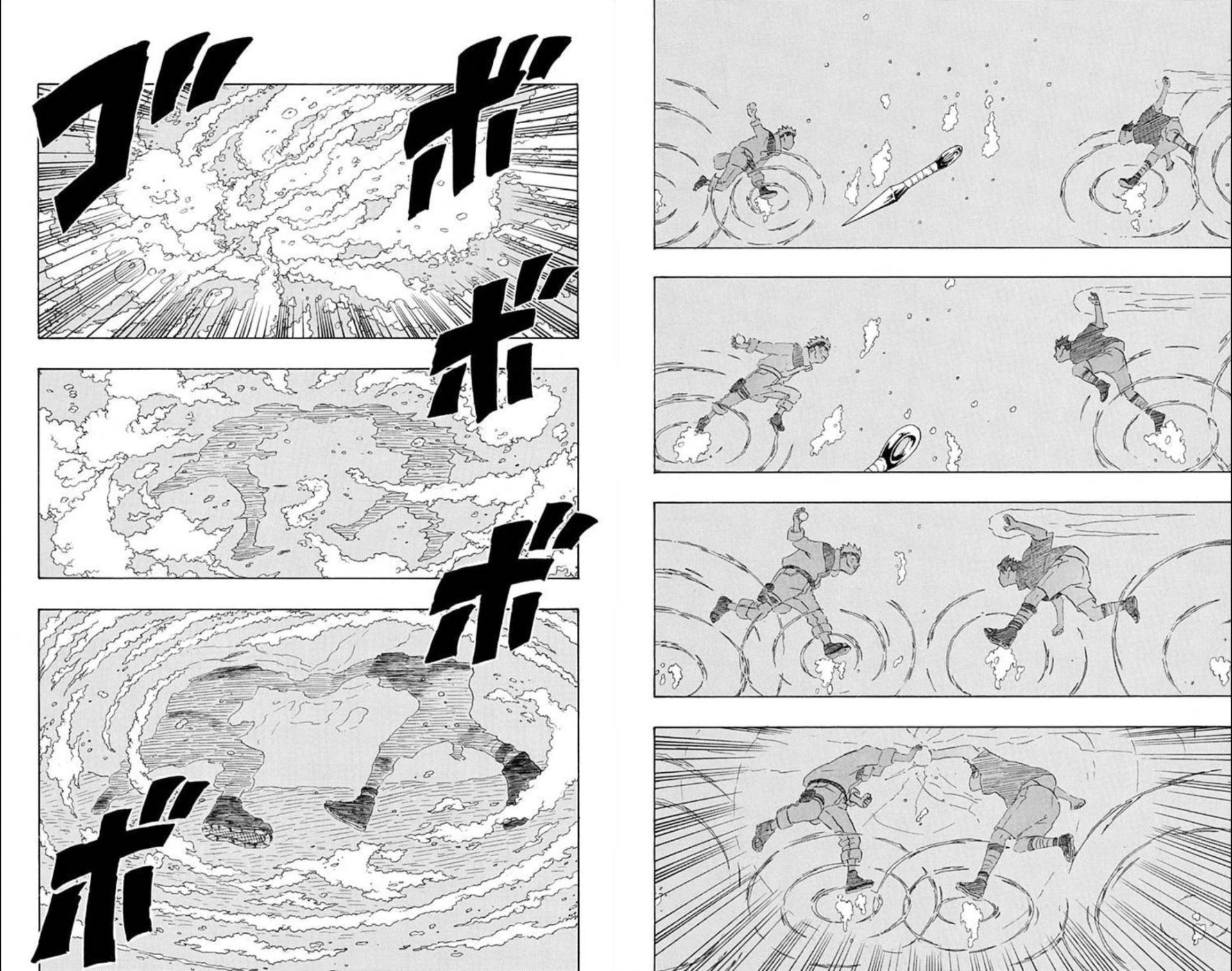
—Is this your number one favorite?
I haven't ranked my best five, but it's definitely up there.
I also really like the depiction of the sinking kunai on the page preceding this one. There is a similar sequence set when Madara Uchiha and Hashirama Senju are boys that has a stone sinking to the bottom of the river, and it serves as a metaphor for the future relationship between the two of them. That really appeals to me as well.
I haven't ranked my best five, but it's definitely up there.
I also really like the depiction of the sinking kunai on the page preceding this one. There is a similar sequence set when Madara Uchiha and Hashirama Senju are boys that has a stone sinking to the bottom of the river, and it serves as a metaphor for the future relationship between the two of them. That really appeals to me as well.
An Extinct Art Style? The Elusive Technique
—Let's move on to the second one.
The second one is, well, Sasuke has a technique called "Kirin", and in my opinion the scene where he uses it is an excellent one because of how it fuses Kishimoto's artistry with technology.
The second one is, well, Sasuke has a technique called "Kirin", and in my opinion the scene where he uses it is an excellent one because of how it fuses Kishimoto's artistry with technology.
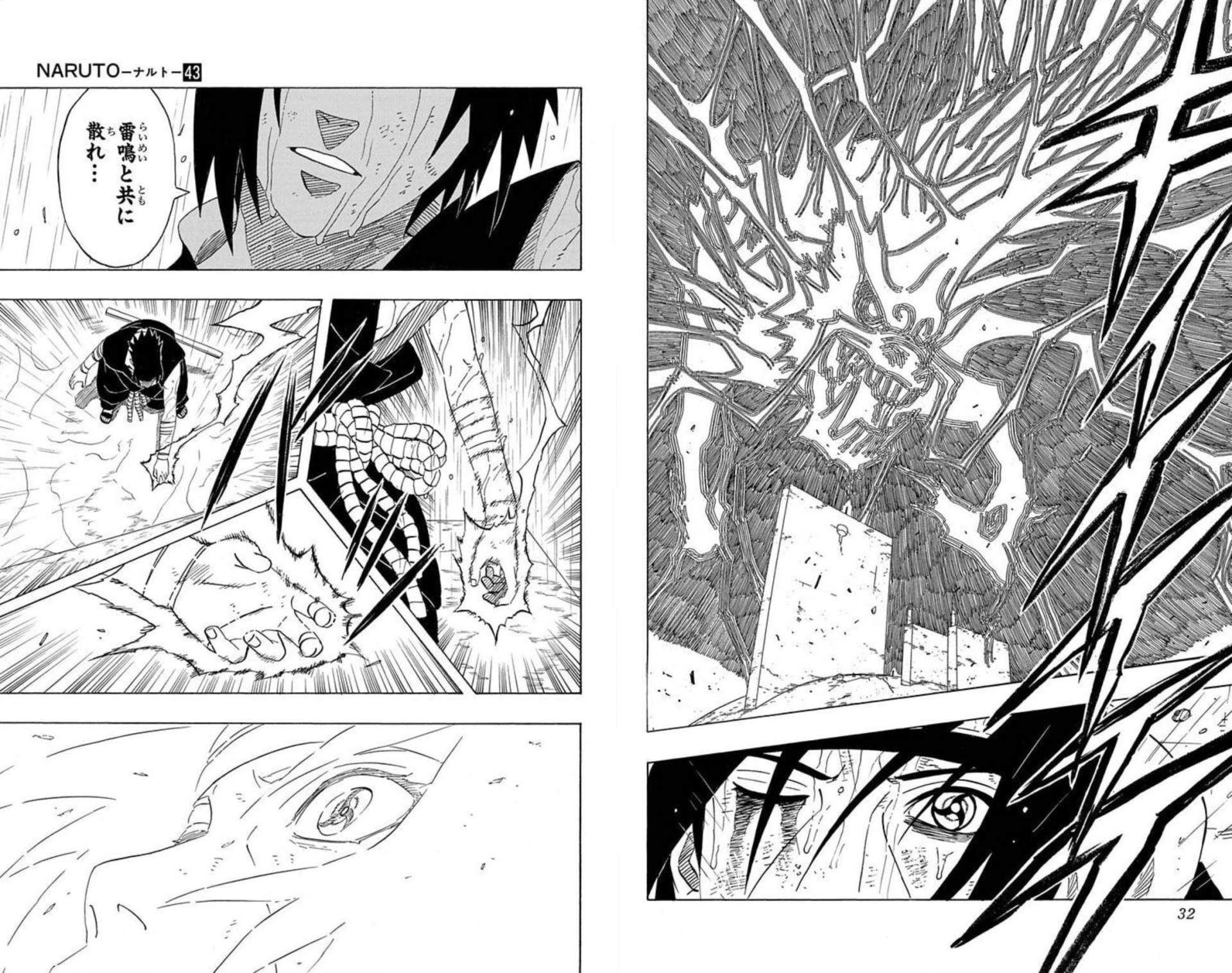
When this was released, I thought "How would one even draw this scene?" and when I met Kishimoto I actually asked him about it. He said that he had used an old copy machine that he owned with a function called "outlining" which, when you have a thick line, leaves only the arch shapes and whitens the inside.
I recall him saying something like, "This outlining function used to exist, but it doesn't anymore, so I can't draw Kirin nowadays." I thought, "So that's how he did it." Afterwards, I looked at it again and realized there were three layers of outlined lines! I was shocked he had copied it so many times.
—All right, now the third one.
For the third, it has to be this vista.
I recall him saying something like, "This outlining function used to exist, but it doesn't anymore, so I can't draw Kirin nowadays." I thought, "So that's how he did it." Afterwards, I looked at it again and realized there were three layers of outlined lines! I was shocked he had copied it so many times.
—All right, now the third one.
For the third, it has to be this vista.

When you think of NARUTO, this is the kind of scenery that comes to mind. Kishimoto supposedly only did the sketch while the inking was done by an assistant, but honestly, I have to wonder if I'd even be able to draw a sketch like this for a weekly series.
Not only is the speed required for this amazing, but this scene directly mirrors another scene in the latter half of the story where Sasuke returns to the village. Naruto is on the right side viewing the village to the left, whereas Sasuke's scene is the opposite.
Naruto exclaims that it hasn't changed at all, while Sasuke remarks that the village has changed a lot, so even their reactions directly contrast with each other. Of course the art is great, but the whole scene is just the best. This choice may be mainly based on the narrative device used, but it's the scene that left the biggest impact on me as a child.
—Number four, please.
There's a technique used in movies called "double action", and this page is a manga version of that. The scene is captured from three different perspectives like "Bam! Bam! Bam!" I really like this cinematic feel.
Not only is the speed required for this amazing, but this scene directly mirrors another scene in the latter half of the story where Sasuke returns to the village. Naruto is on the right side viewing the village to the left, whereas Sasuke's scene is the opposite.
Naruto exclaims that it hasn't changed at all, while Sasuke remarks that the village has changed a lot, so even their reactions directly contrast with each other. Of course the art is great, but the whole scene is just the best. This choice may be mainly based on the narrative device used, but it's the scene that left the biggest impact on me as a child.
—Number four, please.
There's a technique used in movies called "double action", and this page is a manga version of that. The scene is captured from three different perspectives like "Bam! Bam! Bam!" I really like this cinematic feel.
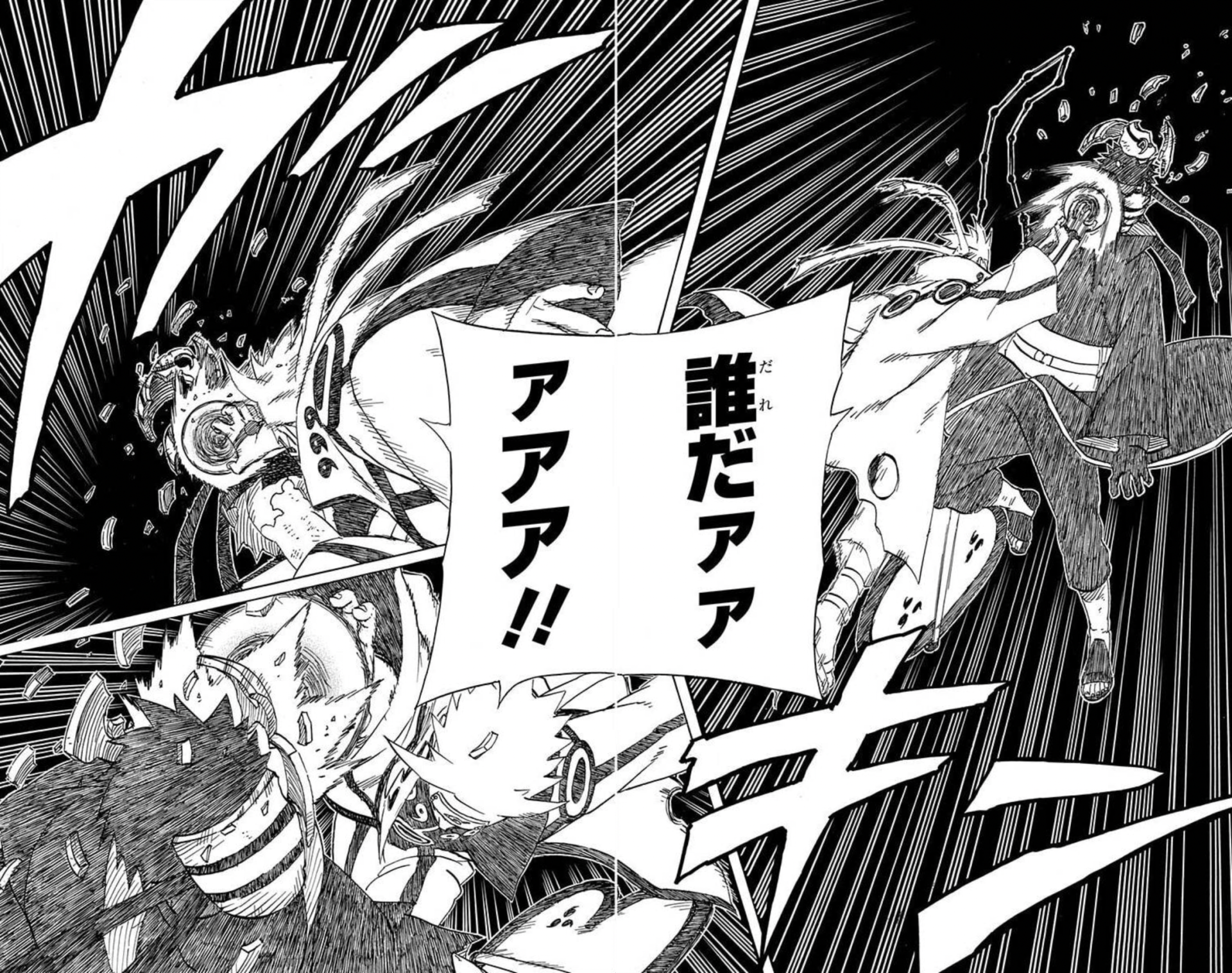
But when I realized I'd forgotten to use this in Sasuke's Story, I could've kicked myself.
—Finally, number 5.
I like this scene in volume 60 with Naruto and Kurama.
—Finally, number 5.
I like this scene in volume 60 with Naruto and Kurama.

The art itself is just so cool, and considering everything up until this point, having Naruto repeat to Kurama what Iruka told him so long ago is really intense. It's like he's becoming the speaker of words he once needed to hear himself, and using them to save someone else who is hurting.
Also, at that time, there was a NARUTO picnic blanket as a sweepstakes giveaway. The picnic blanket came in a storage bag with this picture on it. I won one, and still have it now.
Come to think of it, over the years I drew a bunch of NARUTO pictures on the postcards you send in for sweepstakes, and I won a prize six times.
Also, at that time, there was a NARUTO picnic blanket as a sweepstakes giveaway. The picnic blanket came in a storage bag with this picture on it. I won one, and still have it now.
Come to think of it, over the years I drew a bunch of NARUTO pictures on the postcards you send in for sweepstakes, and I won a prize six times.
Rereading Chapter 1 When Struggling With Storyboards
—Winning 6 times is very lucky, no?
Maybe it's because I didn't enter for the weekly reader presents, but things like summer campaigns that had a lot of winners. I entered seven or eight times and won six.
I drew NARUTO pictures on all the postcards I sent, and colored them in. One time, I drew a character called Tobi who has a line that goes "This left eye of mine is itching for battle", but I changed "battle" to "a present".
When I showed that to my sister, she said it was "a cheap trick", but in the end I did get the present (laughs). I don't think the picture had any effect on that, though.
—Any other scenes you particularly like?
I really like Naruto's first line in chapter 1. When I'm having trouble with my storyboards I reread chapter 1, and I'm amazed every time.
Fin
Read part 1 here
Read part 2 here
Shingo Kimura
Manga Creator
Born in Gunma Prefecture. Graduated from Kiryu University Junior College's Department of Art and Design. Runner-up in the 95th Tezuka Awards. His debut manga was the one-shot Kuimodoshi which appeared in the September 2018 issue of Jump SQ. Since 2022, he has been the artist for Naruto: Sasuke's Story–The Uchiha and the Heavenly Stardust, serialized on Shonen Jump+ and MANGA Plus (story by Masashi Kishimoto and Jun Esaka, original novel published by JUMP j BOOKS).
Interview and Article: Asami Sato
Maybe it's because I didn't enter for the weekly reader presents, but things like summer campaigns that had a lot of winners. I entered seven or eight times and won six.
I drew NARUTO pictures on all the postcards I sent, and colored them in. One time, I drew a character called Tobi who has a line that goes "This left eye of mine is itching for battle", but I changed "battle" to "a present".
When I showed that to my sister, she said it was "a cheap trick", but in the end I did get the present (laughs). I don't think the picture had any effect on that, though.
—Any other scenes you particularly like?
I really like Naruto's first line in chapter 1. When I'm having trouble with my storyboards I reread chapter 1, and I'm amazed every time.
Fin
Read part 1 here
Read part 2 here
Shingo Kimura
Manga Creator
Born in Gunma Prefecture. Graduated from Kiryu University Junior College's Department of Art and Design. Runner-up in the 95th Tezuka Awards. His debut manga was the one-shot Kuimodoshi which appeared in the September 2018 issue of Jump SQ. Since 2022, he has been the artist for Naruto: Sasuke's Story–The Uchiha and the Heavenly Stardust, serialized on Shonen Jump+ and MANGA Plus (story by Masashi Kishimoto and Jun Esaka, original novel published by JUMP j BOOKS).
Interview and Article: Asami Sato
This site includes machine-translated texts for some news articles. Please be aware that you might find some unusual expressions that are difficult to understand.
関連記事


